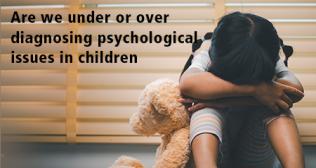
Breaking the Stigma around Mental Health at the Workplace: Our Societal Responsibility – Stuti Sood
Conversations around mental health have gained momentum in recent years, yet there continues to be an identifiable divide when it comes to seeking help pertaining to mental health. It is stigma and our underlying prejudices which overshadow help seeking behaviors in different domains of life.
In the context of the workplace, poor working environments which enable discrimination and any form of inequality in addition to stressors like excessive workload, insecurity pertaining to the job, absence of conducive working environment pose a threat to an employee’s wellbeing.
As per the World Health Organization (WHO), an estimated 12 billion working days are lost every year to depression and anxiety at a cost of US$ 1 trillion per year in lost productivity, globally. The figures call forth a consideration for why the statistics could be so alarming. One of the preliminary factors is the stigma that prevails around mental health. It often stems from misconceptions and preconceived notions which induce a sense of fear and perceived judgment in people who may be struggling.
There are a variety of stereotypes which dissuade people from seeking help at the inception. Some of them include people struggling with mental illness being perceived as weak and less competent which further begets discrimination at the workplace. The endless cycle contributes towards an individual suffering in silence rather than reaching out for the support and resources that they need. Overlooking mental health at the workplace creates a significant impact. It not just impacts productivity, but engagement, overall job satisfaction followed by increased absenteeism and high turnover rates.
Working in a safe and healthy environment is the right of every worker. Organizations need to work towards creating an environment which combats stigma and prioritizes mental health.
This can be achieved through:
Building awareness: Building awareness around mental health is a steppingstone towards dismantling any form of stigma. Making the right information accessible and educating employees about mental health can foster a sense of understanding and empathy which consequently helps manage discrimination in the workplace. Training programs aimed at helping people understand the signs and symptoms can also enable people to cater to their own struggles as well as others around them.
Encouraging an open dialogue: By creating platforms where employees are able to communicate about their challenges without having the fear of judgment can help in bridging the gap. Leading by example, leaders sharing their own experiences with employees can help foster a sense of trust and safety. This can be achieved through having Employee Assistance Programs (EAPs), anonymous surveys, periodic check-ins with employees. Peer support programs aimed at offering support can foster a sense of connectedness which can contribute towards positive mental health.
Implementing policies which are inclusive: Periodically reviewing and implementing policies which aim at fostering diversity and inclusion can help break the stigma. Enabling access to resources and understanding that mental health issues impact different people differently can go a long way in helping demolish barriers to help seeking.
The goal of breaking the stigma around mental health rests on a sense of commitment to change the existing attitudes which pose a threat to wellbeing. It needs to be worked upon consistently while advocating for positive mental health outcomes enabling a culture of openness which offers people a sense of safety. The change in attitudes not just helps an individual but transforms the workforce, making it more resilient while contributing meaningfully to society. As we continue to advance, this World Mental Health Day let us uphold the spirit of prioritizing mental health in the workplace.



















